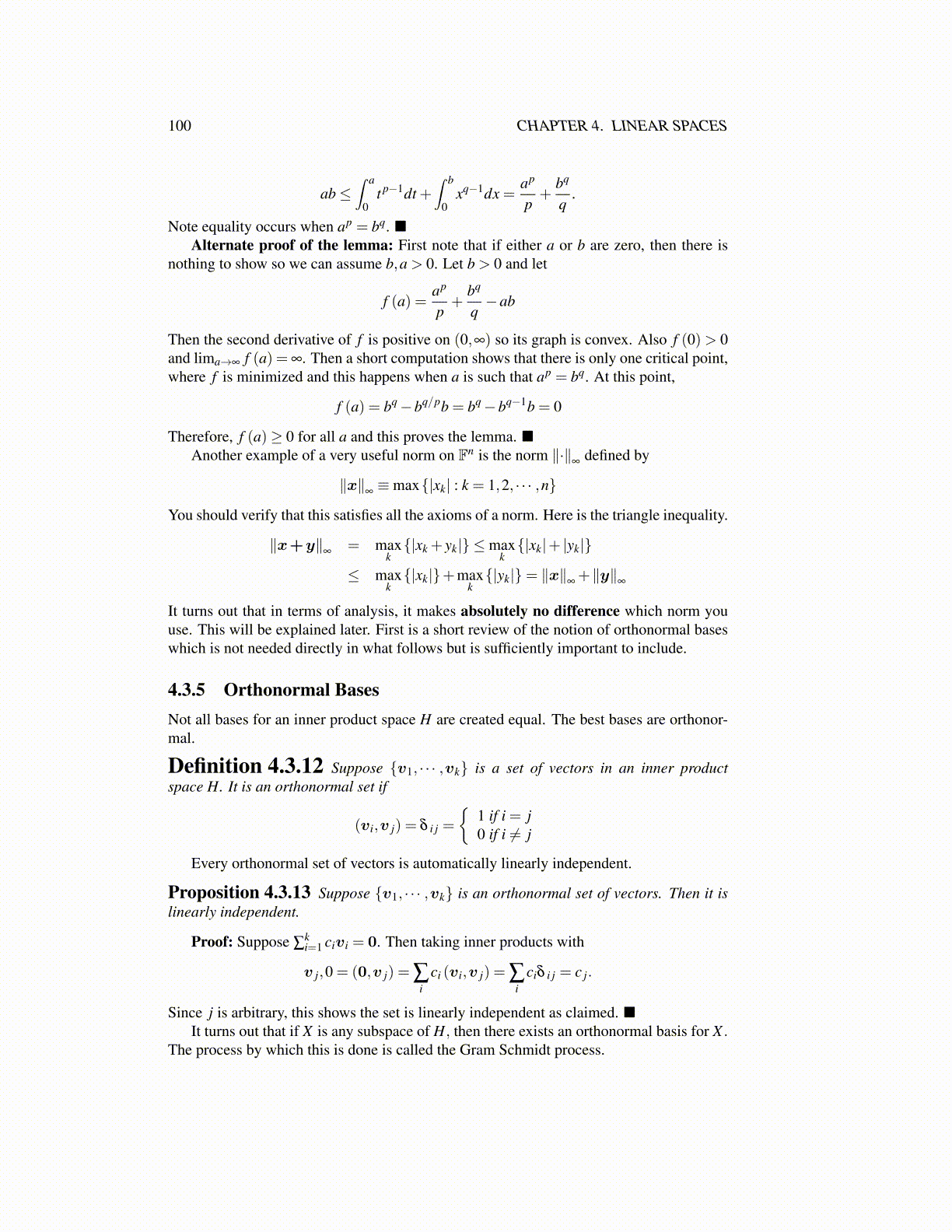
100 CHAPTER 4. LINEAR SPACES
ab≤∫ a
0t p−1dt +
∫ b
0xq−1dx =
ap
p+
bq
q.
Note equality occurs when ap = bq. ■Alternate proof of the lemma: First note that if either a or b are zero, then there is
nothing to show so we can assume b,a > 0. Let b > 0 and let
f (a) =ap
p+
bq
q−ab
Then the second derivative of f is positive on (0,∞) so its graph is convex. Also f (0)> 0and lima→∞ f (a) = ∞. Then a short computation shows that there is only one critical point,where f is minimized and this happens when a is such that ap = bq. At this point,
f (a) = bq−bq/pb = bq−bq−1b = 0
Therefore, f (a)≥ 0 for all a and this proves the lemma. ■Another example of a very useful norm on Fn is the norm ∥·∥
∞defined by
∥x∥∞≡max{|xk| : k = 1,2, · · · ,n}
You should verify that this satisfies all the axioms of a norm. Here is the triangle inequality.
∥x+y∥∞
= maxk{|xk + yk|} ≤max
k{|xk|+ |yk|}
≤ maxk{|xk|}+max
k{|yk|}= ∥x∥∞
+∥y∥∞
It turns out that in terms of analysis, it makes absolutely no difference which norm youuse. This will be explained later. First is a short review of the notion of orthonormal baseswhich is not needed directly in what follows but is sufficiently important to include.
4.3.5 Orthonormal BasesNot all bases for an inner product space H are created equal. The best bases are orthonor-mal.
Definition 4.3.12 Suppose {v1, · · · ,vk} is a set of vectors in an inner productspace H. It is an orthonormal set if
(vi,v j) = δ i j =
{1 if i = j0 if i ̸= j
Every orthonormal set of vectors is automatically linearly independent.
Proposition 4.3.13 Suppose {v1, · · · ,vk} is an orthonormal set of vectors. Then it islinearly independent.
Proof: Suppose ∑ki=1 civi = 0. Then taking inner products with
v j,0 = (0,v j) = ∑i
ci (vi,v j) = ∑i
ciδ i j = c j.
Since j is arbitrary, this shows the set is linearly independent as claimed. ■It turns out that if X is any subspace of H, then there exists an orthonormal basis for X .
The process by which this is done is called the Gram Schmidt process.